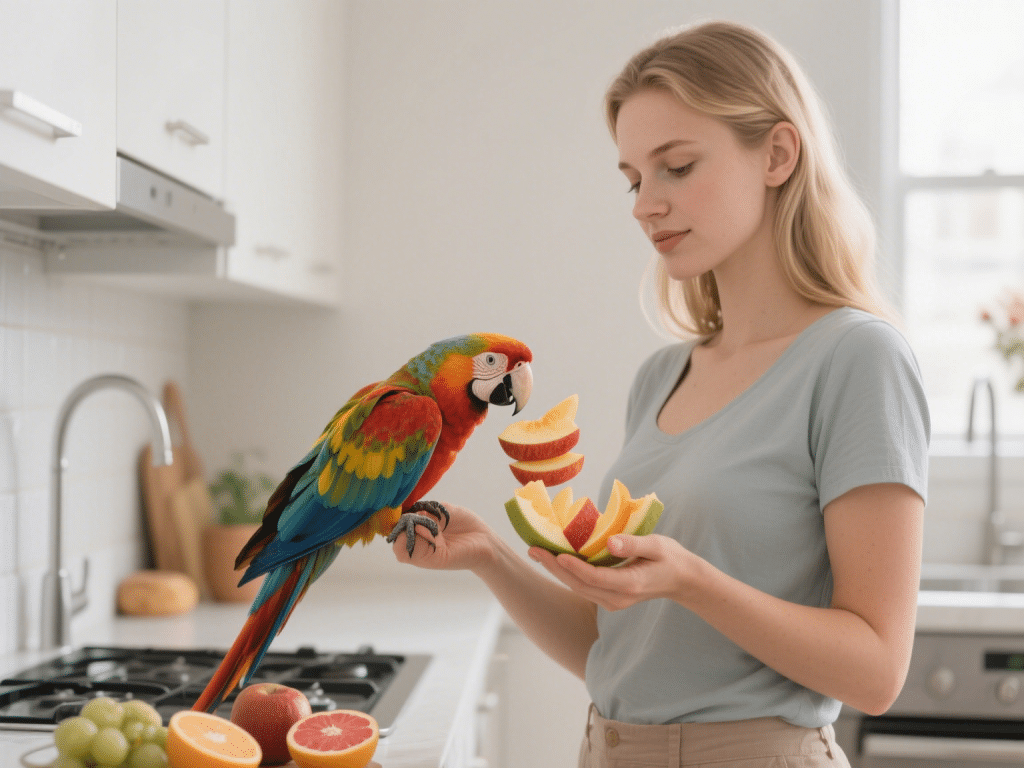
Birds thrive on variety—and fruits can be a nutritious part of a balanced diet. But not all fruits are safe for your feathered friend. As an avian care educator with years of experience advising exotic bird owners, I’ve curated this guide to help you choose the right fruits, in the right amounts, with safety and nutrition in mind.
Why Offer Fruits to Birds?
Natural source of vitamins (A, C) and hydration
Encourages foraging behaviors
Adds excitement and enrichment to meals
Top Safe Fruits for Pet Birds
| Fruit | Benefits | Notes |
|---|---|---|
| Apple (no seeds) | Fiber & Vitamin C | Remove core, seeds toxic |
| Banana | Easy to digest, potassium-rich | Mash for small species |
| Blueberries | Antioxidants galore | Great in small daily doses |
| Papaya | Digestive enzymes | Peel before offering |
| Mango | Beta carotene | Avoid skin for safety |
| Melon | Hydrating, low sugar | Clean seeds before serving |
Fruits to Avoid
Avocado: Toxic due to persin
Cherry pits, apple seeds: Contain cyanide compounds
Citrus (in large amounts): Can cause digestive upset
Serving Guidelines
Wash thoroughly: Remove pesticides and wax
Cut into manageable sizes based on bird species
Limit to 10–15% of total diet
Serve fresh, not dried or canned (due to added sugars)
Safe Feeding Frequency
Small birds (budgies, finches): 1–2 tsp, 2–3 times weekly
Medium birds (cockatiels, conures): 1–2 tbsp, 3–4 times weekly
Large birds (macaws, African greys): ¼ cup daily max
Enrichment Tips
Hide fruits in foraging toys
Serve on skewers or frozen blocks in summer
Rotate types to maintain interest
Conclusion
Fruits can be a healthy treat when offered correctly. Stick to bird-safe varieties, monitor portion sizes, and always remove any seeds or toxic parts. With informed feeding practices, your pet bird will enjoy a colorful, nutritious diet that supports long-term health.







Comments on " Safe Fruits for Pet Birds: A Vet-Approved Feeding Guide" :